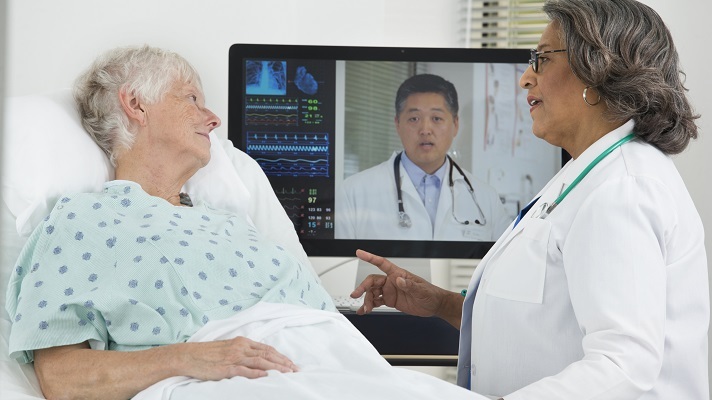Introduction: Embracing Technological Advancements in Senior Care
The U.S. is witnessing a significant demographic shift, with the population aged 65 and over reaching 55.8 million in 2020—a 38.6% increase from 2010. (U.S. Census Bureau) This surge underscores the critical need for innovative solutions in senior care. Contactless monitoring technologies, utilizing sensors, artificial intelligence (AI), and the Internet of Things (IoT), offer non-intrusive, real-time health and safety monitoring for residents. Despite their potential, adoption rates remain low due to various challenges. This article explores the pressing reasons why integrating contactless monitoring solutions is essential for nursing homes, assisted living facilities (ALFs), and skilled nursing facilities (SNFs) in the U.S.
1. Addressing the Growing Aging Population
The U.S. Census Bureau reports that one in six people in the United States were 65 and over as of 2020. (U.S. Census Bureau) This demographic shift increases the demand for senior care services, necessitating scalable solutions to ensure quality care.
Why It Matters:
- Increased Care Demands: A larger elderly population requires more comprehensive monitoring to manage chronic conditions and prevent emergencies.
- Resource Allocation: Traditional care models may struggle to meet the needs of a rapidly growing senior demographic without technological support.
Call to Action:
Implementing contactless monitoring systems enables facilities to efficiently monitor residents’ health, ensuring timely interventions and personalized care plans.
2. Mitigating Healthcare Staffing Shortages
Nursing homes experienced the worst job losses during the COVID-19 pandemic compared to any other healthcare sector and still need more than 130,000 workers to return to pre-pandemic levels. (American Health Care Association)
Why It Matters:
- Care Quality: Staff shortages can lead to increased workloads, burnout, and compromised patient care.
- Operational Challenges: Facilities may face difficulties in maintaining adequate staffing levels, affecting their ability to accept new residents.
Call to Action:
Adopting contactless monitoring solutions can alleviate staff burdens by automating routine tasks and providing real-time health data, allowing caregivers to focus on direct patient care.
3. Preventing Falls and Enhancing Resident Safety
Falls are the leading cause of injury among adults aged 65 and older in the U.S., resulting in approximately 3 million emergency department visits annually. (CDC)
Why It Matters:
- Health Risks: Falls can lead to severe injuries, long-term disability, and increased mortality rates among the elderly.
- Financial Implications: The cost of treating injuries caused by falls among older adults is projected to increase to over $101 billion by 2030. (National Council on Aging)
Call to Action:
Implementing contactless monitoring systems with fall detection capabilities can significantly reduce the incidence and severity of fall-related injuries, promoting resident safety and reducing healthcare costs.
4. Reducing Hospital Readmissions
In 2018, there were 3.8 million 30-day all-cause adult hospital readmissions, with an average readmission cost of $15,200. (HCUP-US)
Why It Matters:
- Financial Burden: High readmission rates lead to substantial costs for healthcare systems and can result in penalties for facilities.
- Resident Well-being: Frequent hospitalizations can negatively impact the physical and mental health of residents.
Call to Action:
Utilizing contactless monitoring allows for continuous health tracking, enabling early detection of potential issues and reducing unnecessary hospital readmissions.
5. Enhancing Operational Efficiency and Cost-Effectiveness
Facilities are facing financial challenges, with 45% operating at a loss or negative total margin. (American Health Care Association)
Why It Matters:
- Resource Management: Efficient operations are crucial for the sustainability of care facilities, especially amid financial constraints.
- Quality of Care: Operational inefficiencies can divert resources away from patient care, affecting service quality.
Call to Action:
Integrating contactless monitoring systems streamlines operations by providing actionable insights, optimizing resource allocation, and enhancing overall care quality.
Conclusion: Embracing the Future of Senior Care
The convergence of an aging population, staffing shortages, and rising healthcare costs necessitates the adoption of innovative solutions in senior care. Contactless monitoring technologies offer a viable path forward, enhancing resident safety, improving care quality, and ensuring operational efficiency. By embracing these technologies, nursing homes, ALFs, and SNFs can meet current challenges and set a new standard for excellence in senior care.
Take Action Today:
Investing in contactless monitoring solutions is not just a technological upgrade; it’s a commitment to providing safer, more efficient, and higher-quality care for our aging population.

